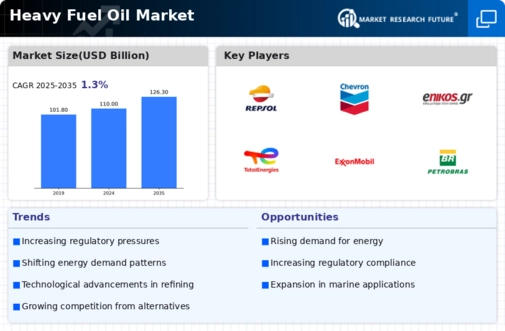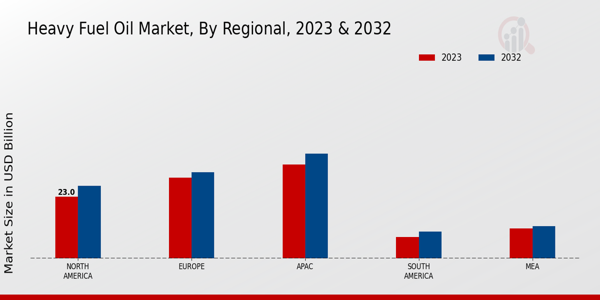Market Trends and Projections
Increasing Demand from Marine Sector
The Global Heavy Fuel Oil Market Industry experiences a notable surge in demand from the marine sector, primarily driven by the need for cost-effective fuel alternatives. Heavy fuel oil is favored for its high energy density and lower cost compared to other marine fuels. In 2024, the market is projected to reach 110.0 USD Billion, reflecting the industry's adaptation to stringent regulations aimed at reducing emissions. The International Maritime Organization's regulations encourage the use of low-sulfur fuel, yet heavy fuel oil remains a viable option for many operators, suggesting a potential for continued growth in this sector.
Regulatory Frameworks Favoring Heavy Fuel Oil
The regulatory frameworks established by various governments appear to favor the continued use of heavy fuel oil in specific sectors. While there is a global push towards cleaner energy sources, certain industries, particularly shipping and power generation, still rely heavily on heavy fuel oil due to its cost-effectiveness and availability. The Global Heavy Fuel Oil Market Industry benefits from these regulations, which often provide a transitional phase for industries to adapt to cleaner alternatives. This regulatory environment may sustain demand, particularly in regions where heavy fuel oil is a primary energy source.
Global Economic Recovery and Industrial Growth
The Global Heavy Fuel Oil Market Industry is likely to benefit from global economic recovery and subsequent industrial growth. As economies rebound, industrial activities are expected to ramp up, leading to increased energy consumption. Heavy fuel oil remains a preferred choice for many industries due to its affordability and efficiency. The anticipated growth in industrial output could drive the market value to 126.3 USD Billion by 2035. This trend suggests that as industries expand, the demand for heavy fuel oil will remain robust, particularly in developing regions where energy infrastructure is still evolving.
Infrastructure Development in Emerging Economies
Infrastructure development in emerging economies significantly influences the Global Heavy Fuel Oil Market Industry. Countries such as India and Brazil are investing heavily in energy infrastructure, which increases the demand for heavy fuel oil in power generation and industrial applications. This trend is expected to contribute to the market's growth, with projections indicating a market value of 126.3 USD Billion by 2035. As these nations expand their energy capabilities, heavy fuel oil is likely to play a crucial role in meeting energy demands, particularly in regions where alternative energy sources are less accessible.
Technological Advancements in Refining Processes
Technological advancements in refining processes are reshaping the Global Heavy Fuel Oil Market Industry. Innovations in hydrocracking and residue upgrading technologies enhance the quality of heavy fuel oil, making it more appealing to consumers. These advancements not only improve fuel efficiency but also reduce emissions, aligning with global environmental standards. As a result, the market is poised for a compound annual growth rate of 1.27% from 2025 to 2035. This growth is indicative of the industry's commitment to sustainability while maintaining the economic advantages of heavy fuel oil.























